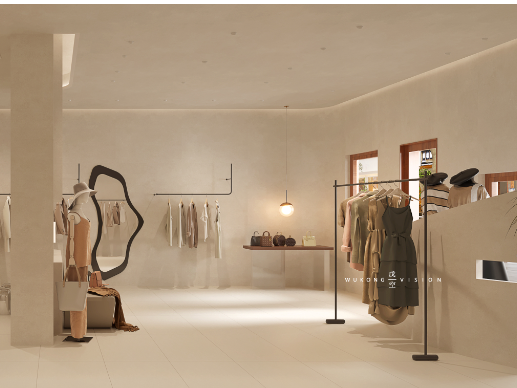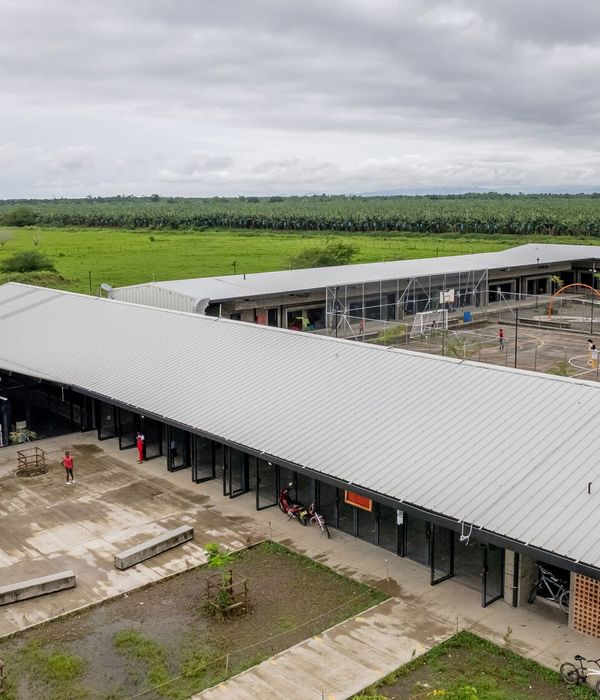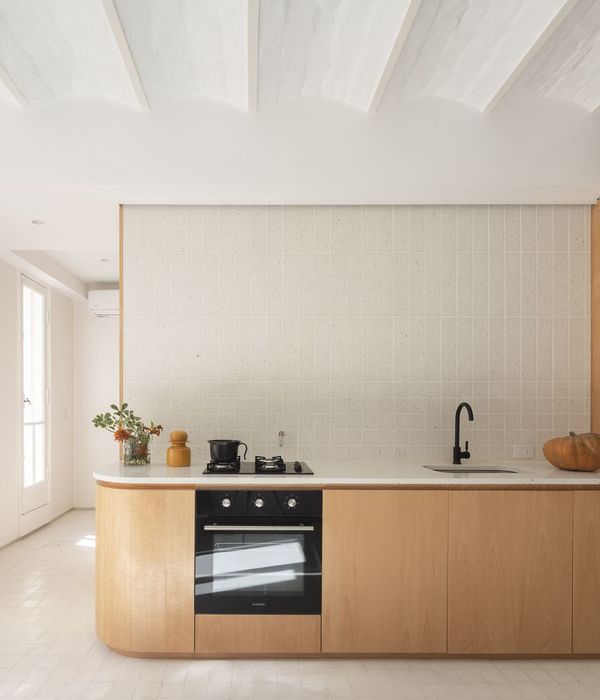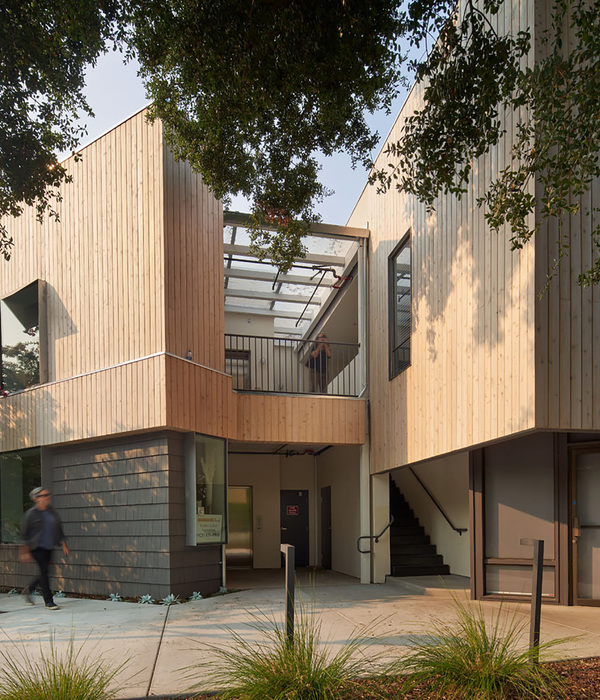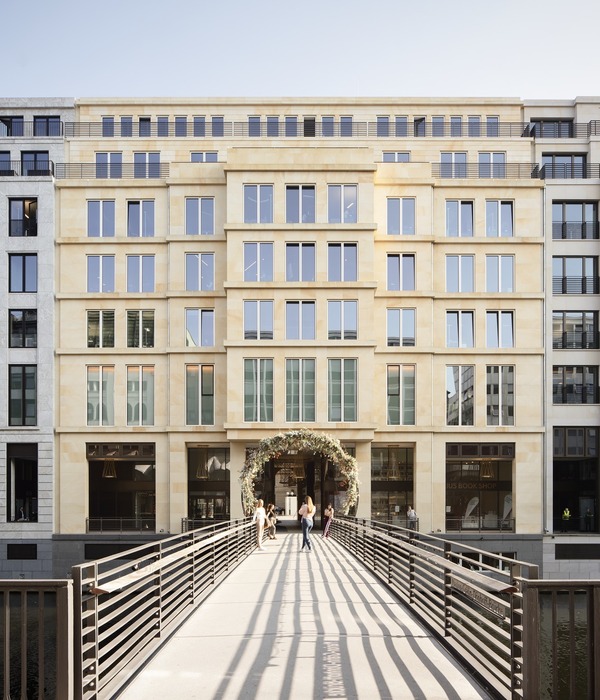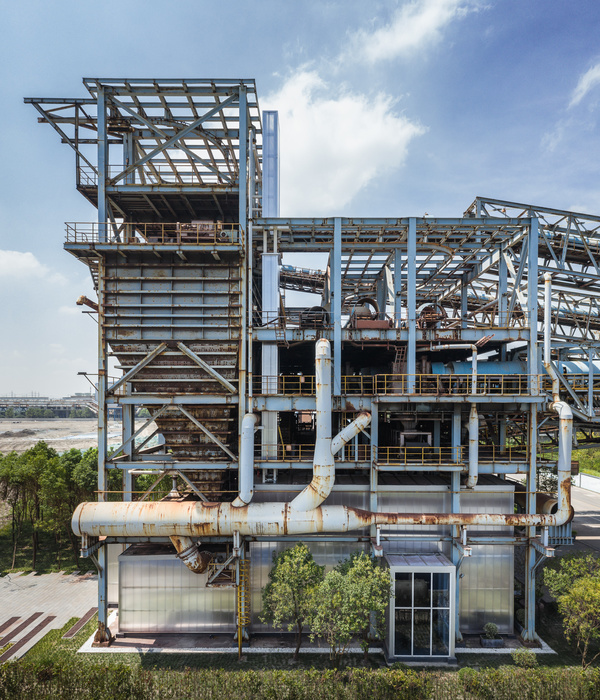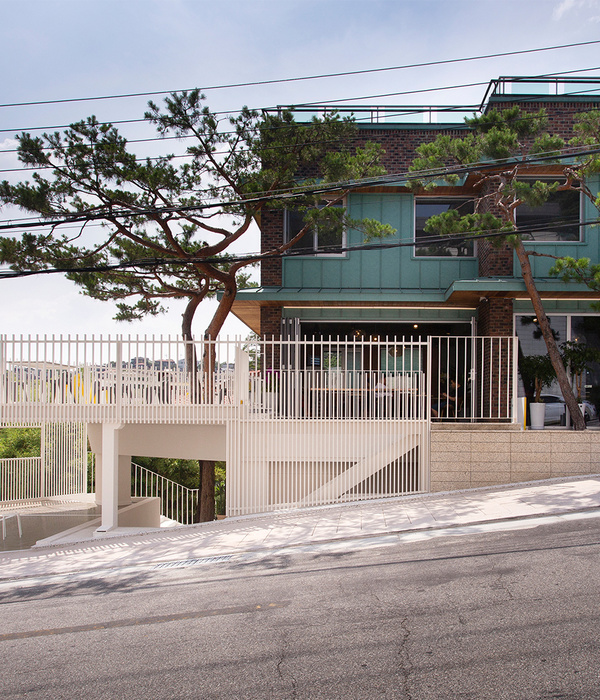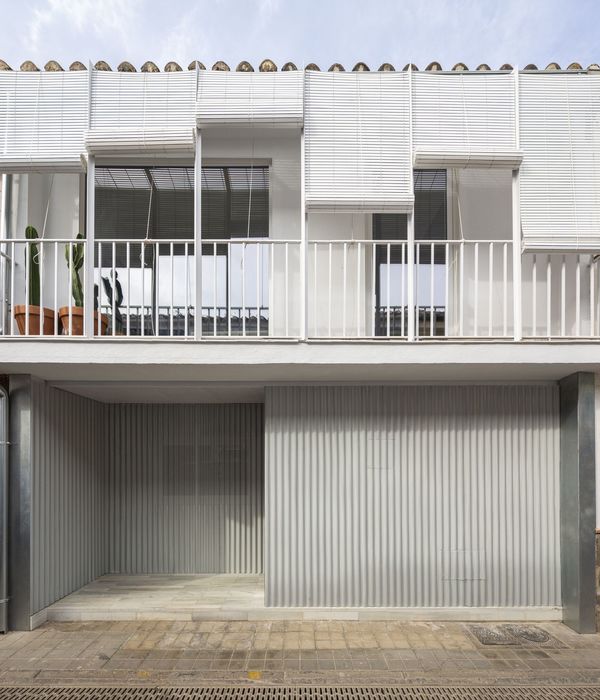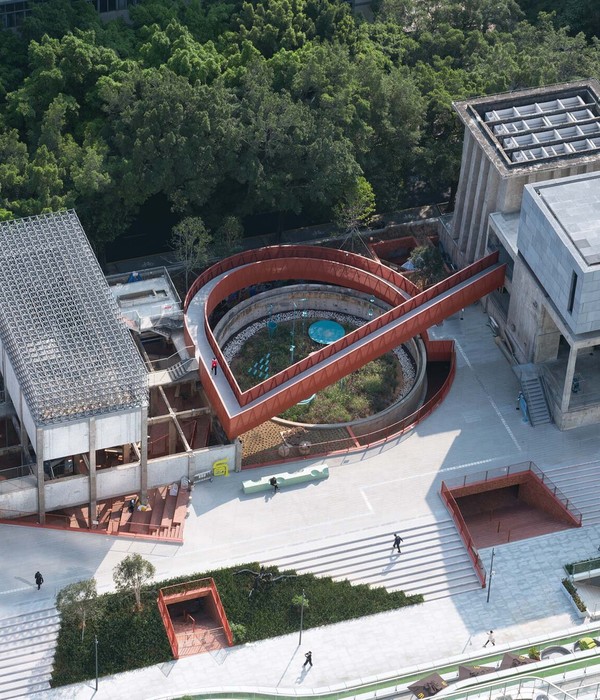来自
Rafael Viñoly Architects
.
Appreciation towards
Rafael Viñoly Architects
for providing the following description:
建筑从空中看是一个跨度365米的覆盖在新的航站楼的翅膀,建筑的标志性造型特点也从乌拉圭典型的连绵起伏丘陵和沙丘等的自然景观受到启发。
Seen from the air as a wing that spans 365 meters over the new terminal, the building’s iconic character also draws from with the rolling hills and dunes that typify Uruguay’s natural landscape.
▼建筑外观,弧形的屋顶在景观上保持形体的低调,external view of the building, curved roof maintains a low profile on landscape
▼建筑意向,architecture sketch
▼建筑鸟瞰,bird view of the building
卡拉斯科国际机场,位于乌拉圭首都蒙德维的亚。机场是在全国唯一常年提供国际连接的机场,每年有两百万人次,也是具有象征意义的国家门户。维诺里设计的宽敞的新航站楼,扩展了现有的设施,提高了客流量,使其更现代化并促进该地区的商业和旅游业发展。
Carrasco International Airport, officially known as “Aeropuerto Internacional de Carrasco General Cesareo L. Berisso,” serves Montevideo, the capital city of Uruguay. With two million passengers per year, it is the only airport in the country that provides year-round international connections. As a result, it carries great symbolic value as the “front door” for many visitors to the country. Viñoly’s design expanded and modernized the existing facilities with a spacious new passenger terminal to expand capacity and spur commercial growth and tourism in the region.
▼屋顶覆盖便于到达的出发大厅和室外平台,其中包括开放的空间,自然光,餐饮,零售和景观,以及安检之后的中央大厅,Roof houses fully accessible roadside departures hall and terrace with amenities such as open space, natural light, restaurants, retail, and landscaping, as well as secure concourse zones
新航站楼的设计特别突出公共区域,是源当地重视在出发前与家人朋友道别的传统。这些公共区域包括跑道一侧的中央大厅,道路一侧方便到达的出发大厅和室外平台,为机场提供了开放空间,自然光,以及餐饮,零售和景观等功能。所有这些都坐落65米(1200英尺)长屋顶的优雅弧线下。公共的景观平台位于出发层的二楼,可欣赏到跑道和主要中央大厅。设计还突出了餐饮,商业和文化空间。抵达区域和出发区域从地面分离,抵达区在一楼,出发区在二楼,而车辆进出道路独立分布于每一楼层。这个延展的白色屋面,像一条从地面开始的曲线,是受文脉和地域建筑的影响的产物。
The new terminal design, with prominence placed on public zones, is based on the regional tradition of seeing family and friends of before a flight. These public zones include the secure runway-side concourse as well as the fully accessible roadside departure hall and terrace, providing amenities such as open space, natural light, restaurants, retail, and landscaping, all housed beneath a gently curved roof 365 meters (1,200 feet) in length. A public, landscaped terrace occupies the second floor above the departure level, providing views of the runway and the main public concourse. The design also features a restaurant and space for commercial and cultural use. Arrivals and departures are separated by floor, with arrivals on the ground level, departures on the first floor, and vehicular access roads that service each level independently. This sweeping white roof, a single curve starting from the ground, is influenced by context and regional architecture.
▼宽敞的公共空间容纳旅客和非旅行的朋友和家人,Generous public spaces accommodate travelers and non-traveling friends and family
▼策略性地利用自然采光和视线,引导旅客到达/出发的序列,Strategic use of day lighting and views guides travelers through arrival/departure sequence
▼室外平台,terrace
▼登机桥,boarding bridge
机场柔和的曲线和整体式低矮的屋顶是受到乌拉圭沿海岸线的滚动沙丘启发。虽然卡拉斯科国际机场的建筑解决方案源于现代的空间、功能和结构观念,它的屋顶则是从与当地地形的关系中获得灵感。这个建筑代表了乌拉圭从一个重要的区域国家转变为国际商业和旅行的目的地。
The gentle curve and low profile of the airport’s monolithic roof is inspired by the rolling dunes along Uruguay’s coastline. While the architectural solution for the Carrasco International Airport is modern in its conception of space, function, and structure, the roof is regionally inspired and draws its strength from its relationship to the surrounding topography. The building represents Uruguay’s transformation from an important regional country to an international destination for commerce and travel.
▼夕阳下的建筑,building in the sunset
▼总平面图,site plan
▼一层平面图,ground floor plan
▼二层平面图,second floor plan
▼剖面图,sections
▼日照分析,lighting studies
▼总体结构示意图,structure diagram
▼围护结构示意图,enclosure diagram
▼结构分析,structure analysis
▼雨水收集系统,rainwater collection diagram
{{item.text_origin}}

